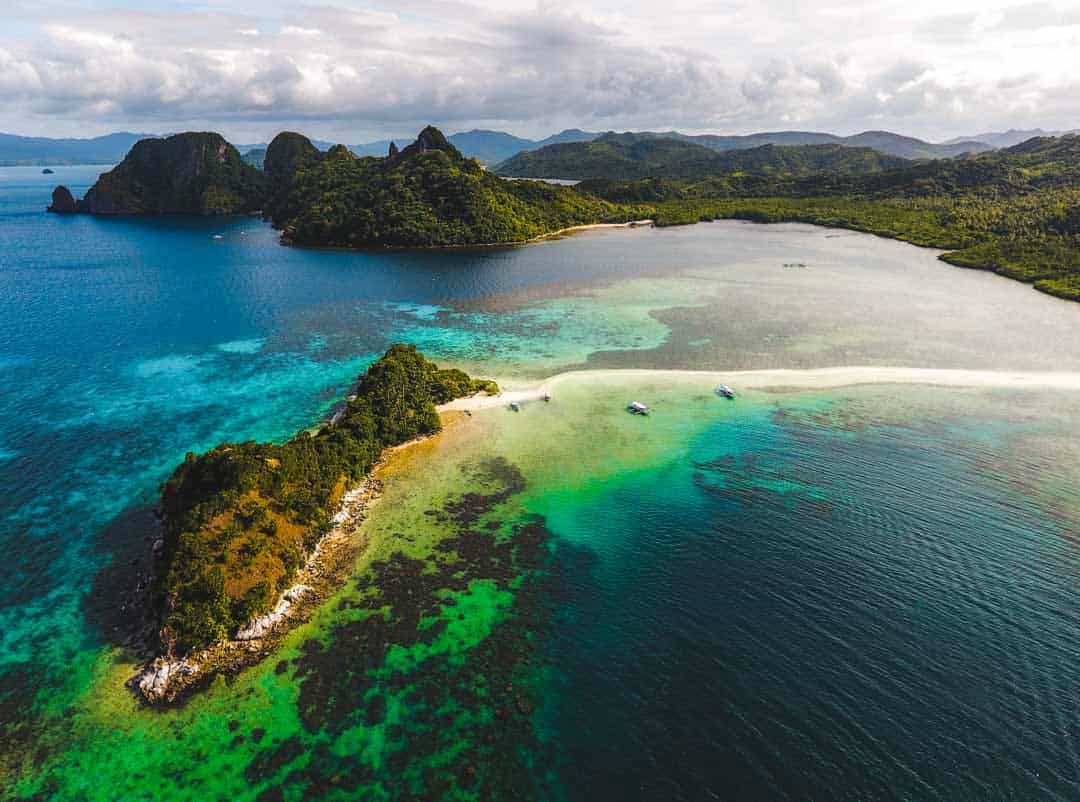With more than 7,000 islands scattered across the Pacific Ocean and some of the best beaches in Asia, it’s no surprise that the Philippines is on the bucket list for many divers. It lies at the epicenter of global marine biodiversity, with everything from quirky critters to huge schools of fish and migrating whales among the underwater highlights.
UNESCO-listed reefs, exceptional muck diving, manta and thresher shark cleaning stations are among the “must visit” dive sites, with shore dives, daily boat dives and multi-day liveaboard trips available. As this island nation encountered significant action during World War II, the seafloor is also littered with exceptional wrecks to discover.
So, if you’re looking for the best spots for scuba diving Philippines and “only in the Philippines” dive encounters, here are eight of our top pics to inspire your adventures.
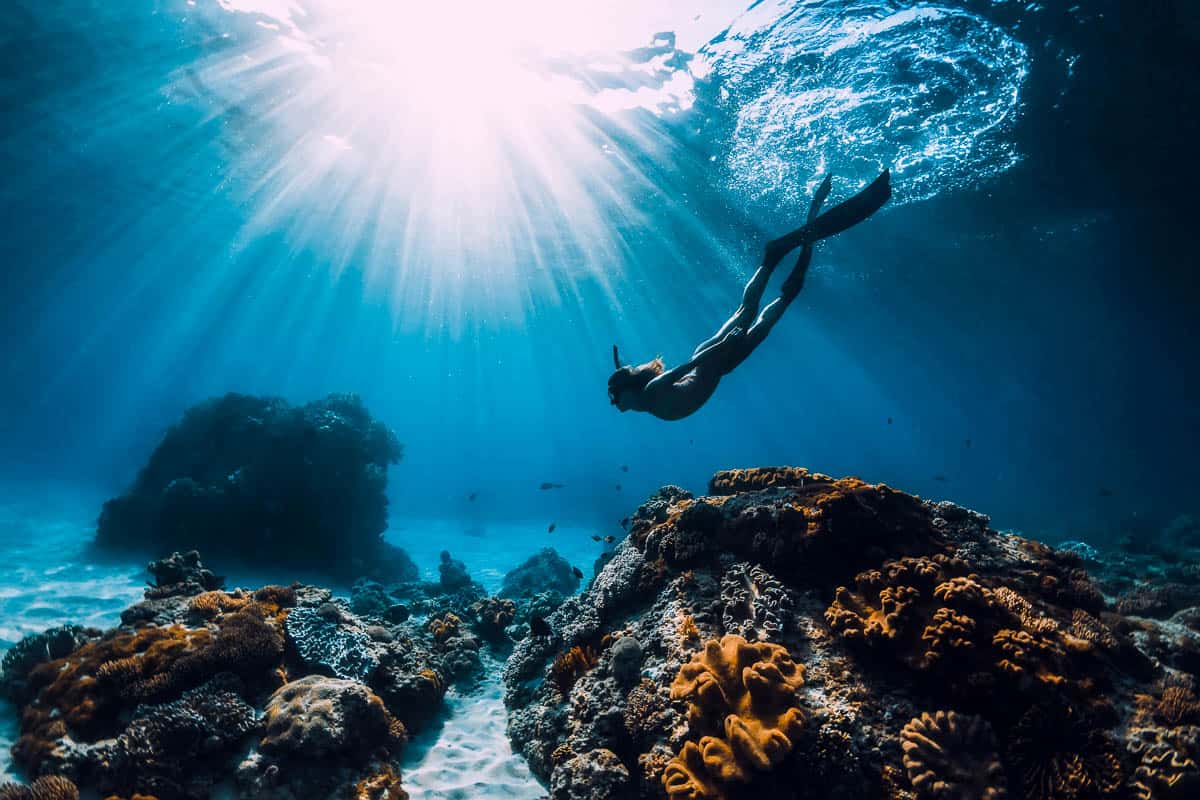
BEST SCUBA DIVING PHILIPPINES IN 2022
ALL THE BEST SCUBA DIVING PHILIPPINES THAT WE TESTED
CORON
DIFFICULTY
Beginner/Intermediate/Advanced
DEPTH
40 to 140 feet (12 to 42 meters)
VISIBILITY
16 to 50 feet (5 to 15 meters)
ACCESSIBILITY
Boat dives
NOTABLE SEALIFE
Barracuda, reef sharks, nudibranch
RENOWNED FOR
Wrecks, corals, lakes
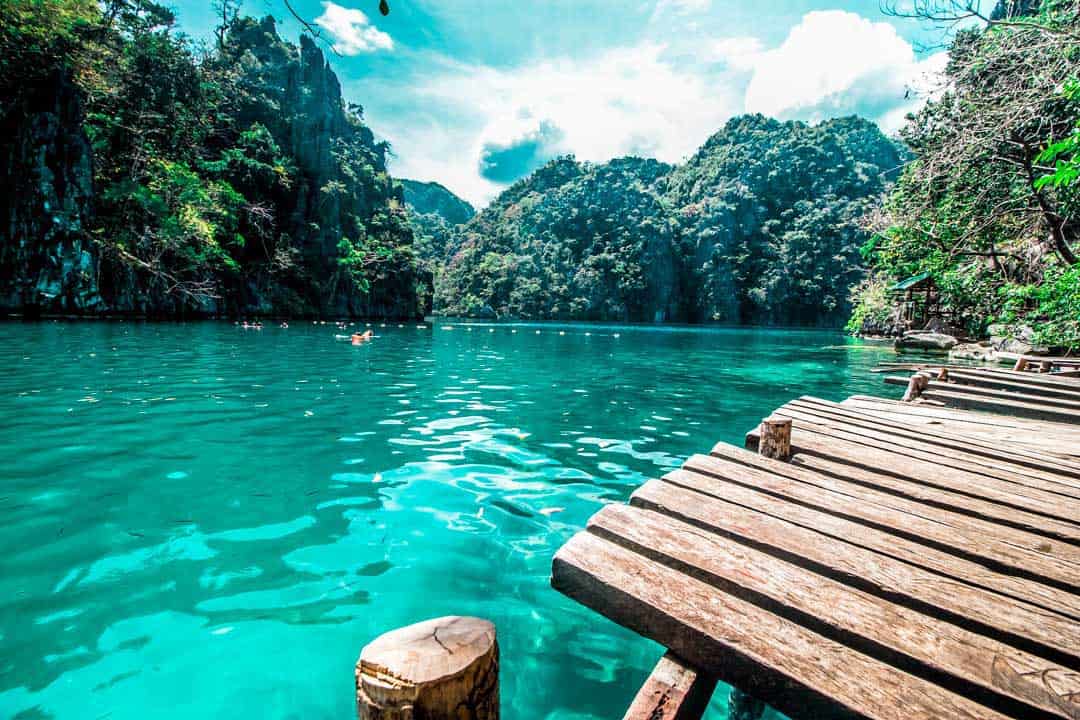
Boasting some of the best wreck diving in Southeast Asia, Coron teeters off the Philippine adventure island of Palawan in a region of stunning natural beauty. Soaring limestone cliffs draped in jungle plunge into the waters of the Sulu Sea where numerous Japanese supply ships were sunk by US bombers in 1944.
Most of the wrecks are within a reasonable depth for recreational divers and are not only filled with fascinating artifacts but myriad marine species who’ve taken up residence. While the nutrient-rich waters can limit the visibility, it’s more than compensated for by the incredible corals and marine invertebrates that have flourished here as a result.
Highlights for Palawan divers in Coron include the 525-foot-long tanker, the Okikawa Maru, whose top sits just 32 feet below the water’s surface, as well as the Kogyo Maru and Taiei Maru wrecks. In complete contrast is Barracuda Lake where you can experience the natural phenomenon of a halocline, with a gradual rise in temperature as you descend to its other-worldly bottom landscape.
If you’re traveling with non-divers, Coron also offers some of the best snorkeling in the Philippines, with plenty of shallow coral reefs to explore.
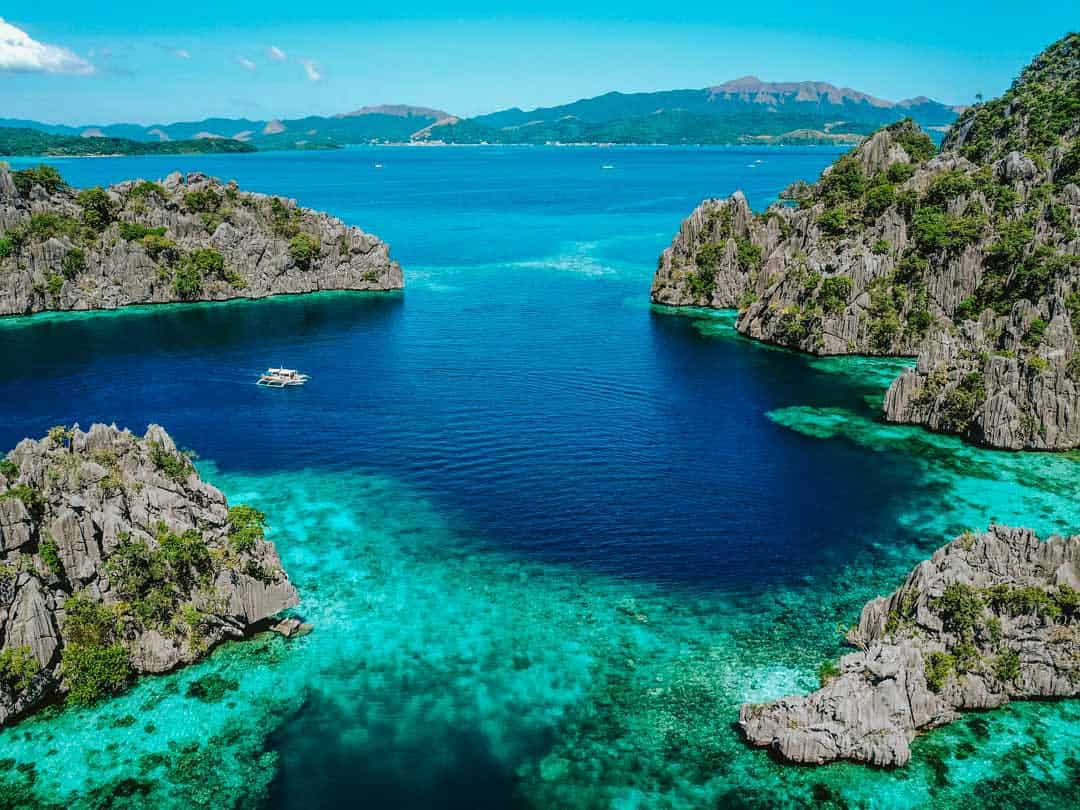
SUBIC BAY
DIFFICULTY
Beginner/Intermediate
DEPTH
55 to 147 feet (17 to 45 meters)
VISIBILITY
7 to 98 feet (2 to 30 meters)
ACCESSIBILITY
Boat dives
NOTABLE SEALIFE
Schooling sweet lips, giant groups, moray eels
RENOWNED FOR
Wrecks
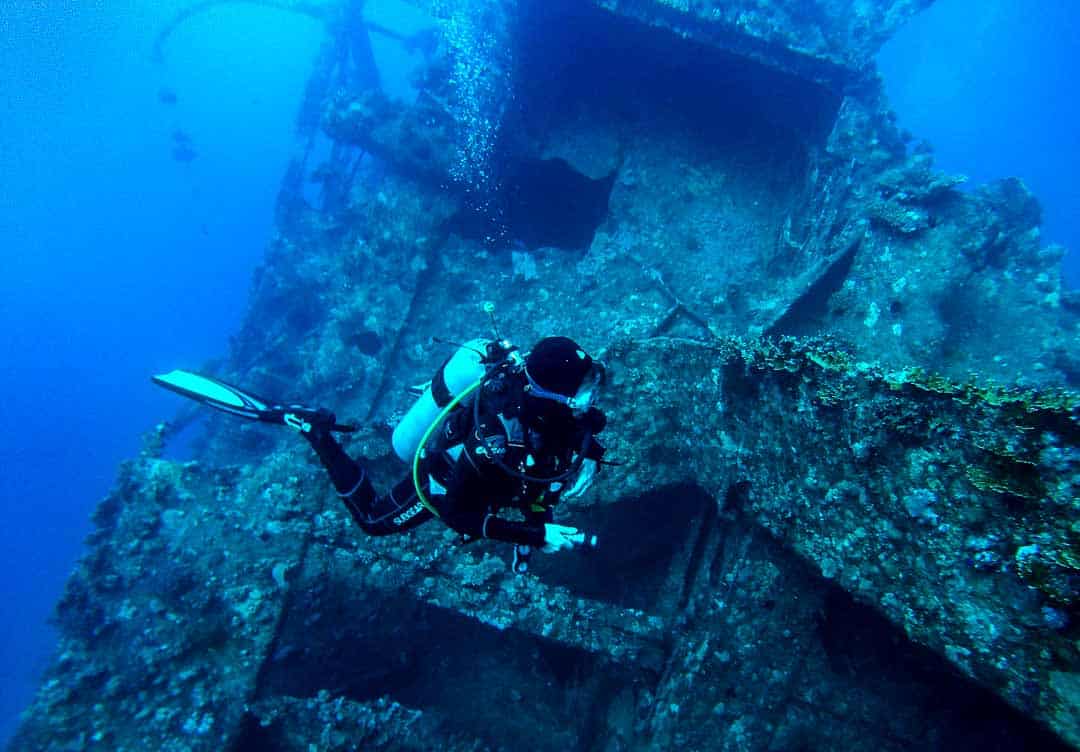
Another mecca for wreck diving in the Philippines is Subic Bay, which was home to the US Naval Forces in the Pacific region and offers some of the best diving in Southeast Asia for those interested in wartime history. Highlights include the late-19th-century USS New York that has all eight of her guns still intact, as well as the cavernous engine room and galley of El Capitan.
If aircraft are more your thing, the Douglas Skyraider is a Korean War-era plane that crashed here in 1962 while the F4 Phantom was a supersonic long-range jet that now provides a home for a variety of reef fish and critters at more than 140 feet down. Schooling trevally, groupers, and jacks are among the fish species in abundance here, together with plenty of fascinating nudibranchs, cleaner shrimps and small crustaceans.
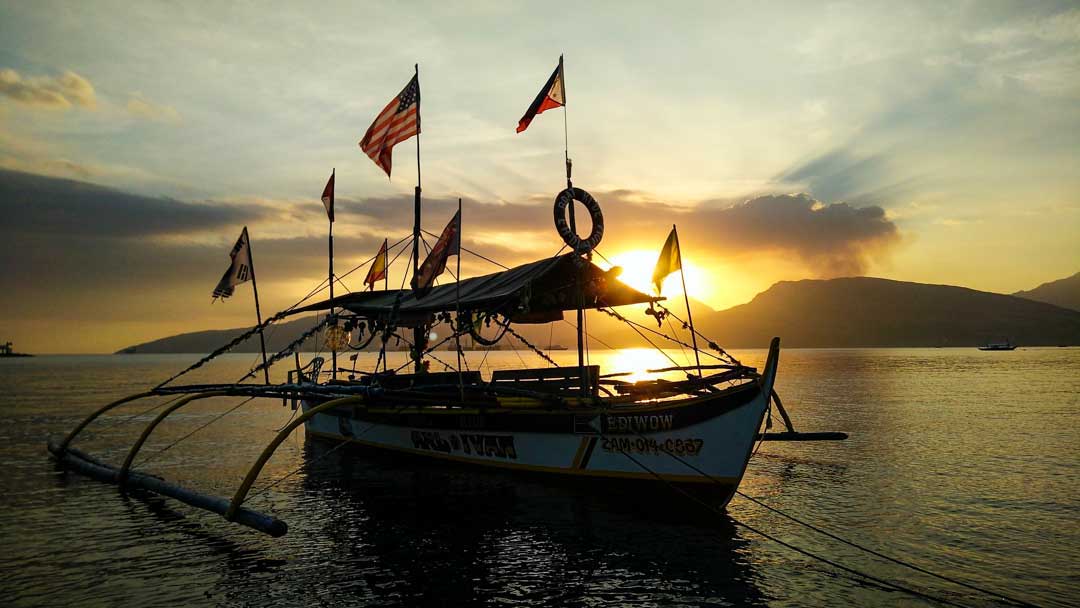
DUMAGUETE
DIFFICULTY
Beginner/Intermediate
DEPTH
16 to 98 feet (5 to 30 meters)
VISIBILITY
30 to 130 feet (9 to 39 meters)
ACCESSIBILITY
Boat and shore dives
NOTABLE SEALIFE
Frogfish, nudibranchs, sea horses
RENOWNED FOR
Sandy bottoms, reefs, wrecks
Situated at the southeastern tip of Negros Island, Dumaguete is famed amongst underwater macro photographers for its muck dives and rare critter encounters. Aside from unusual marine species in unexpected places (think tiny transparent shrimps and brightly colored nudibranchs), there’s also large numbers of tropical fish (parrot fish, Moorish idols, fusiliers), together with passing pelagics such as turtles and barracuda.
The small island and marine sanctuary of Apo Island is also just a short boat ride away, with its coral-adorned walls and majestic reefs blanketed in both soft and hard corals. For something a little different, head to the Car Wrecks site where an intriguing collection of submerged vehicles are now home to pipefish, frogfish and sea horses.
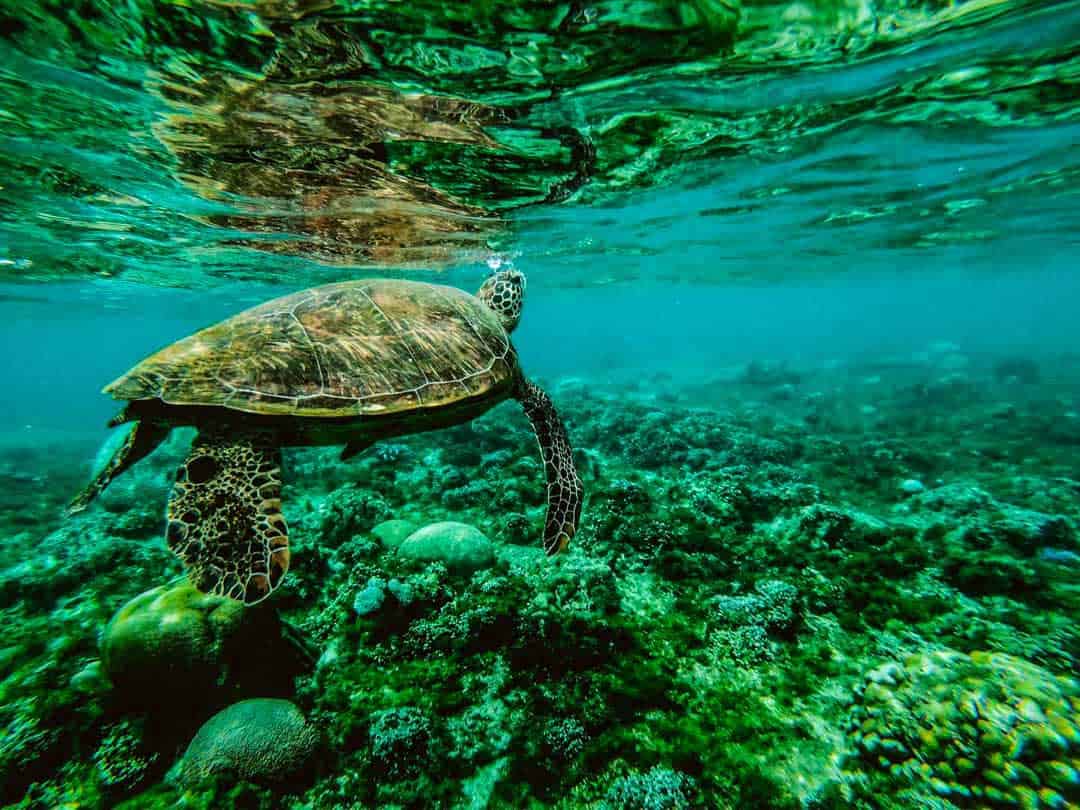
ANILAO
DIFFICULTY
Beginner/Intermediate/Advanced
DEPTH
10 to 130 feet (3 to 39 meters)
VISIBILITY
40 to 50 feet (12 to 15 meters)
ACCESSIBILITY
Boat dives
NOTABLE SEALIFE
Frogfish, blue-ringed octopus, giant seahorses
RENOWNED FOR
Wrecks, pinnacles, sea mounts, reefs
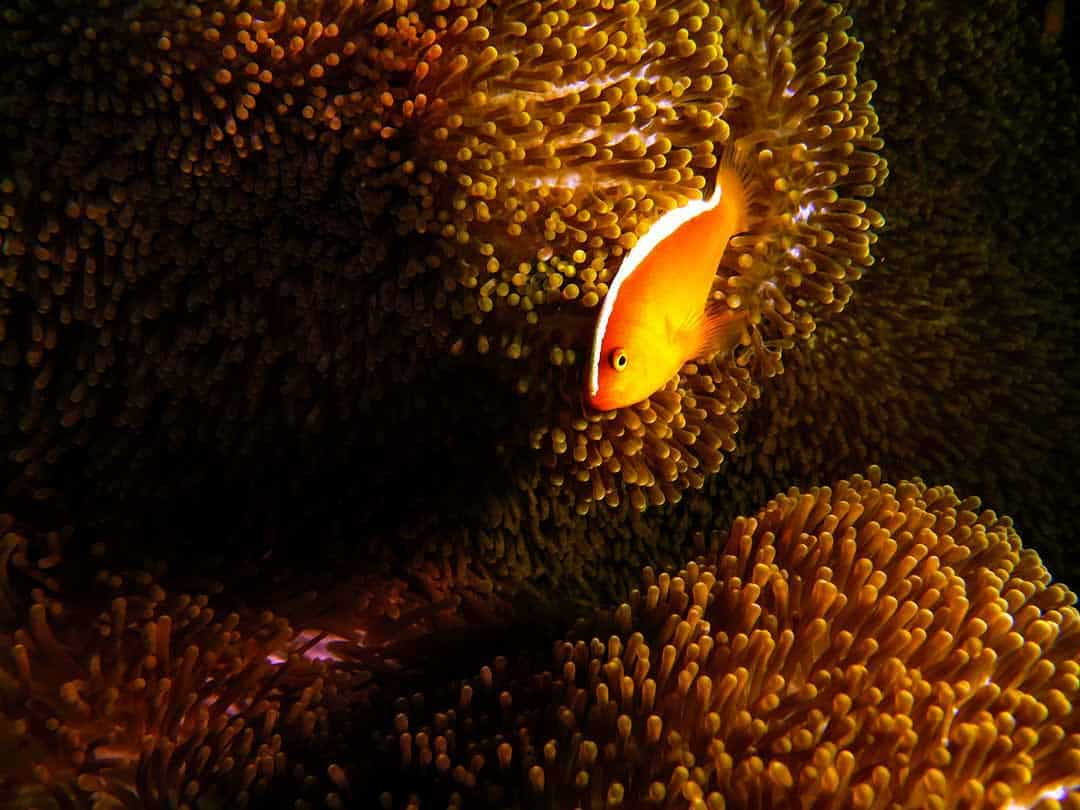
Just a couple of hours drive from Manila, Anilao is one of the top Philippine destinations for Filipino divers. While it’s undergone a lot of development over the years above water, the diversity of dive sites and marine life below the water’s surface make it a worthy destination.
Coral-adorned seamounts and pinnacles bump up against vibrant reefs and picturesque gardens, while captivating shipwrecks line the ocean floor. Anilao is also macro heaven, with plenty of unusual critters and nudibranchs that will appeal to underwater photographers.
Don’t miss “Twin Rocks” and the popular muck diving site of “Secret Bay” or venture out after dark on one of the blackwater dives for which Anilao is renowned. Anilao’s proximity to a range of other famous Philippine landmarks makes it an ideal dive destination for those wanting a diverse vacation or Philippine honeymoon.
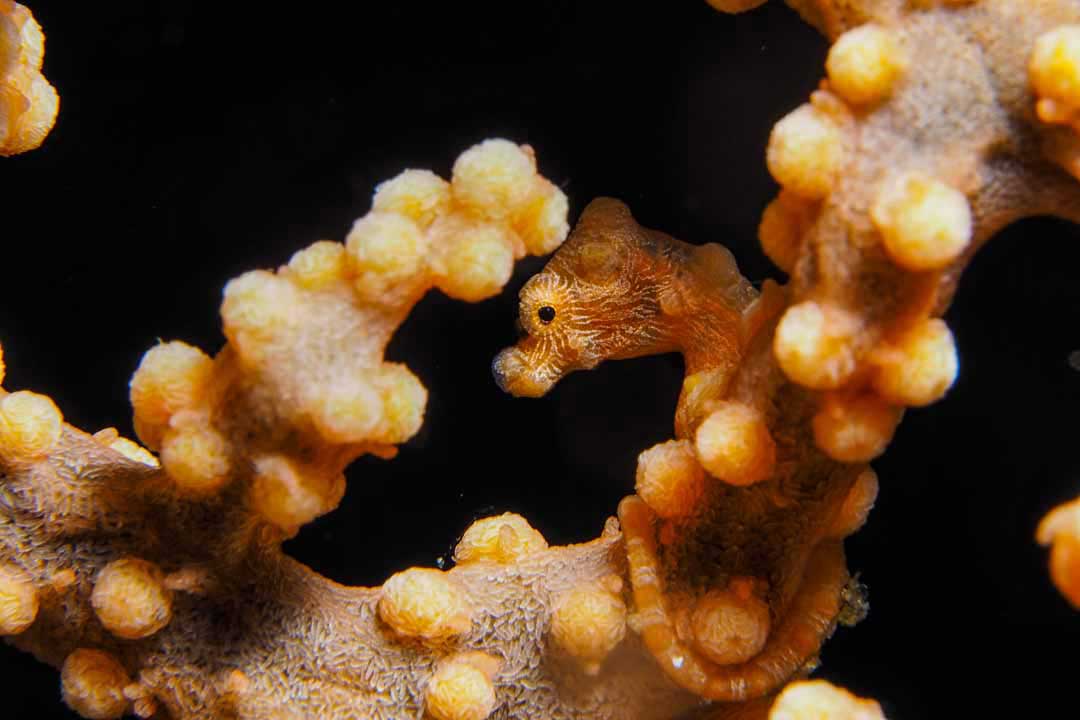
MINDORO
DIFFICULTY
Beginner/Intermediate
DEPTH
16 to 164 feet (5 to 50 meters)
VISIBILITY
33 to 98 feet (10 to 30 meters)
ACCESSIBILITY
Boat and shore dives
NOTABLE SEALIFE
Nudibranchs, schooling barracuda and trevally
RENOWNED FOR
Underwater gullies, shipwrecks, reefs
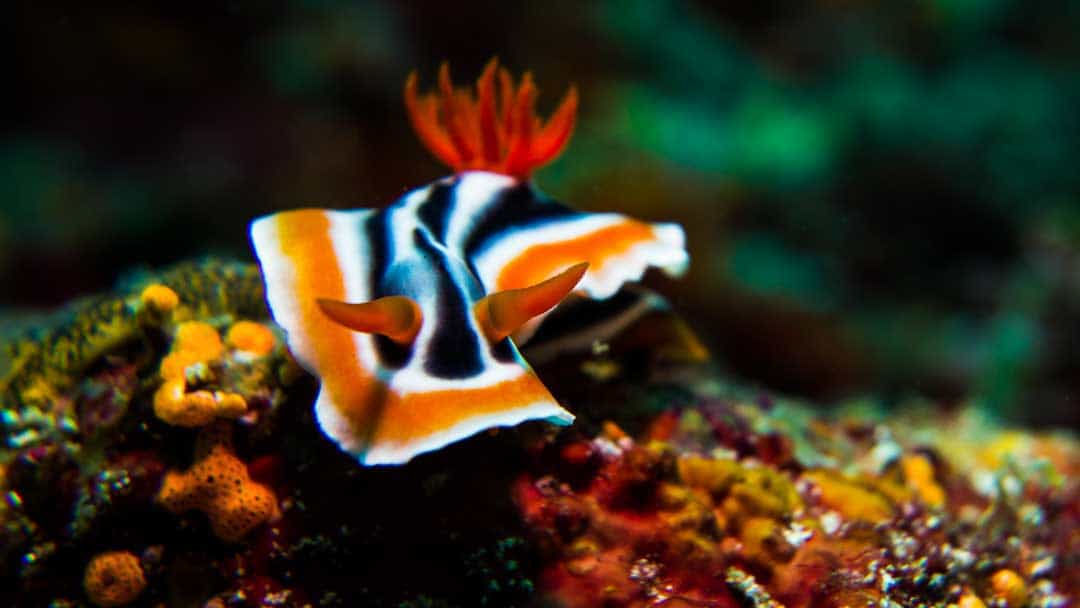
Accessing what is the second largest coral reef in the world, Apo Reef, Mindoro lies on the opposite side of the Verde Island Passage from Anilao. Puerto Galera is the main scuba diving Philippines hub in the area, with everything from easy shore dives on coral reefs to intriguing shipwrecks and deep drift dives on offer.
More than 800 species of nudibranchs have been recorded in the crystal-clear waters here, ensuring underwater photographers won’t be left disappointed. The sheer number of dive sites mean you could easily stay a week, with highlights including the nutrient-rich Canyons area where large schools of fish congregate around underwater gullies covered in soft corals and sponges.
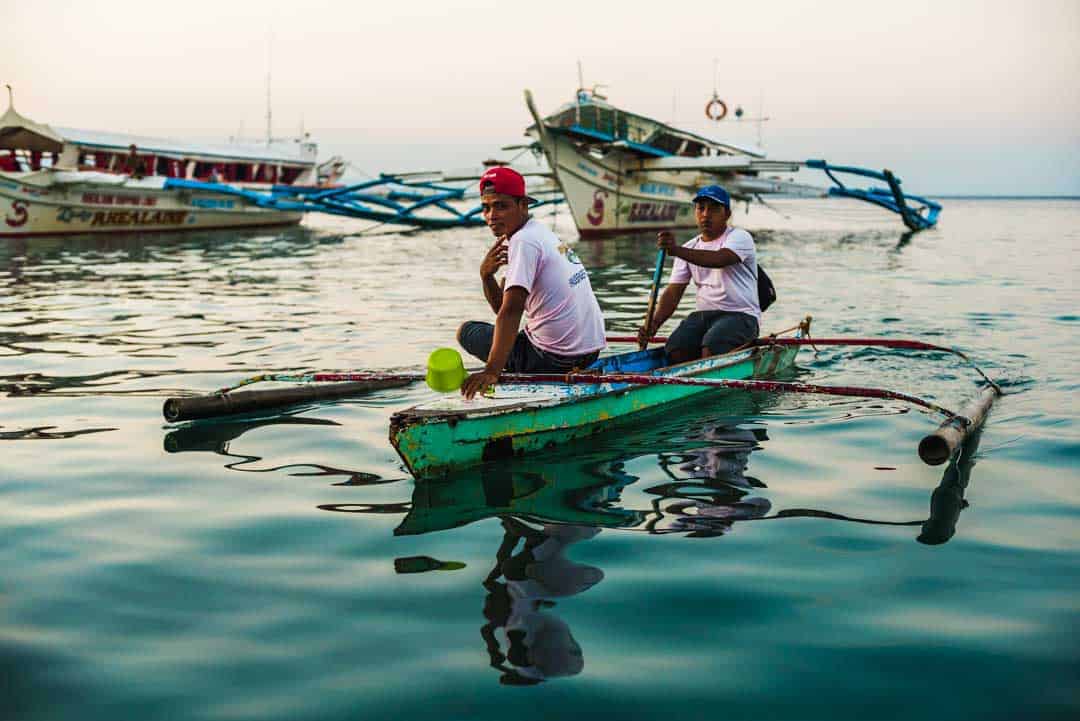
MALAPASCUA ISLAND
DIFFICULTY
Intermediate/Advanced
DEPTH
16 to 130 feet ( 5 to 39 meters)
VISIBILITY
20 to 100 feet (6 to 30 meters)
ACCESSIBILITY
Boat dives
NOTABLE SEALIFE
Thresher sharks, white-tip reef sharks
RENOWNED FOR
Shoal, walls, coral reefs
One of the few places in the world with almost guaranteed sightings of thresher sharks (within recreational limits), Malapascua Island is a tiny speck off the northernmost tip of Cebu. Eight-kilometers off the coast of Malapascua is the submerged seamount of Monad Shoal (one of the underwater world’s most famous landmarks in the Philippines), which serves as a cleaning station for deep-water thresher sharks.
But the Monad Shoal dive is not for the leisure-seeker, requiring a pre-dawn boat ride out to the shoal, followed by often strong currents as you descend along a rope to the cleaning station. If you’re after something more laid-back in the afternoon, a 45-minute boat ride away is Gato Island, a marine reserve that features a diversity of underwater life. It’s famed for the swim-through tunnel known as “The Cave” where white-tip reef shark sightings are common while further afield is the deep wall dive of Kalanggaman Island.
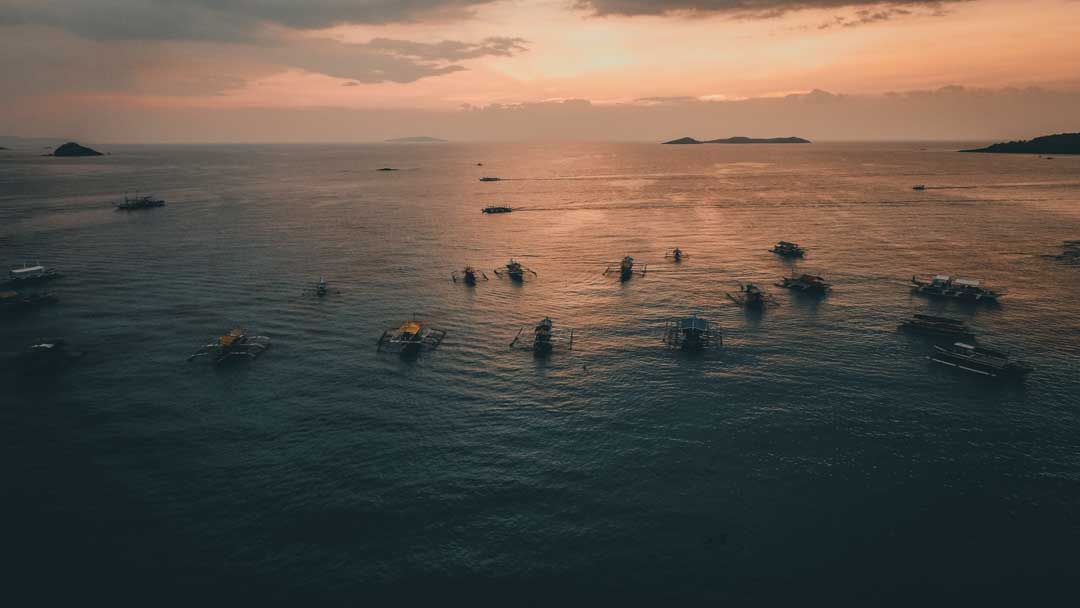
TUBBATAHA REEF
DIFFICULTY
Intermediate/Advanced
DEPTH
50 to 115 feet ( 15 to 35 meters)
VISIBILITY
16 to 148 feet (5 to 45 meters)
ACCESSIBILITY
Liveaboard dive boats
NOTABLE SEALIFE
Reef sharks, manta rays, whale sharks
RENOWNED FOR
Reef, seamounts, walls
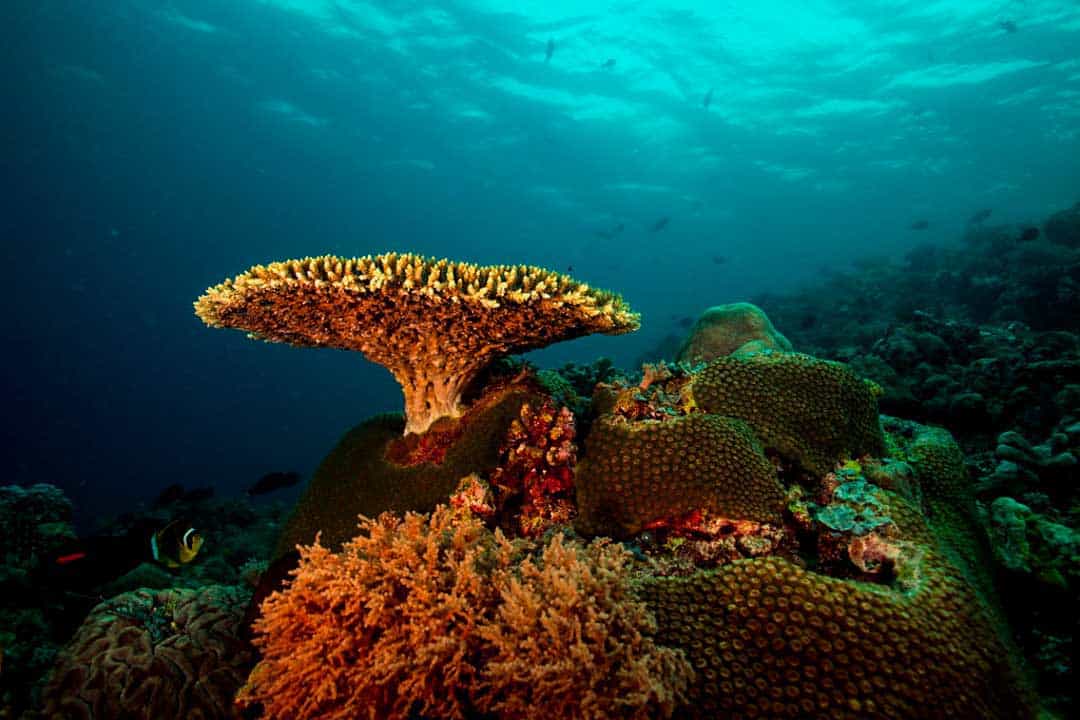
For some of the most spectacular scuba diving Philippines, you have to make the 12-hour boat ride from Puerto Princesa on the coast of Palawan out to the Tubbataha Reef. Situated in the middle of the Sulu Sea, this marine park has been designated as a UNESCO World Heritage Site, with huge slopes and plunging wall dives that are renowned for their exceptional visibility.
The exposed crossing means that the reef can only be dived for a short period each year (March to June) while strong down currents mean it’s suited to experienced divers only. This exceptional Philippine destination serves as a hunting ground for a lot of big species, so you can expect reef sharks, manta rays and whale sharks to name a few. More than 600 fish and 350 coral species have also been recorded here, with highlights including Amos Rock, which is renowned for its gorgonian sea fans and large schools of fish.
BICOL
DIFFICULTY
Intermediate/Advanced
DEPTH
45 to 98 feet (14 to 30 meters)
VISIBILITY
33 to 66 feet (10 to 20 meters)
ACCESSIBILITY
Boat dives
NOTABLE SEALIFE
Whale sharks, manta rays, macro life
RENOWNED FOR
Coral reefs, open water, caves
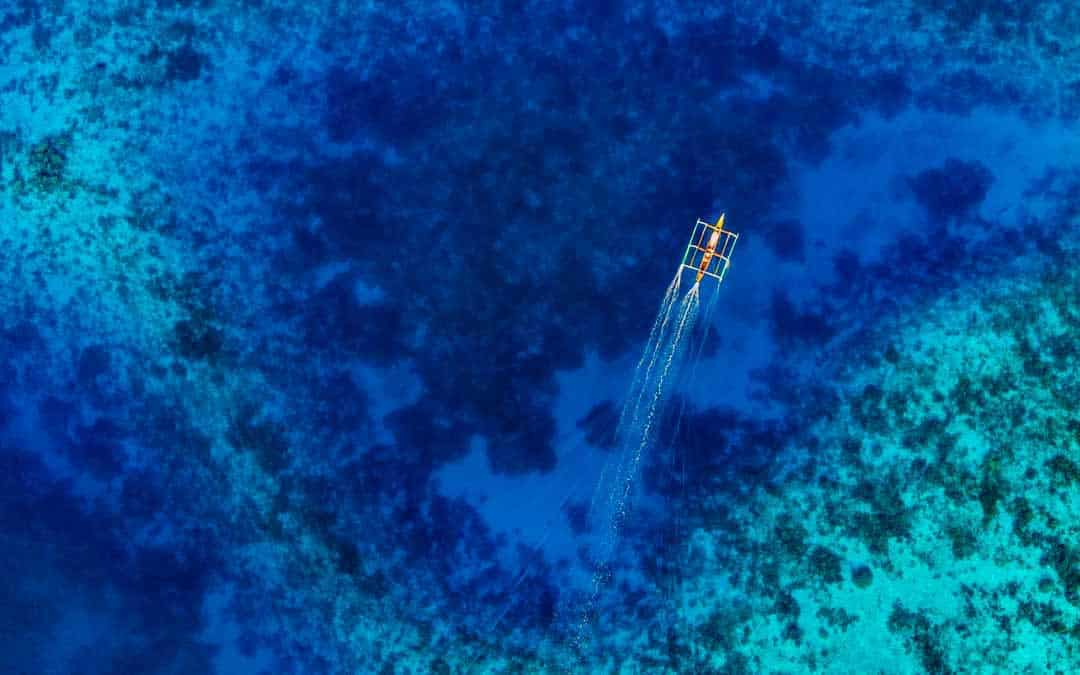
Famed for its sightings of whale sharks that come to feed on plankton off the coast, Bicol is one of the most popular areas in the world to swim alongside these graceful giants. It encompasses the southern part of Luzon Island and its neighboring islands, with Donsol, Ticao Island, Catanduanes, and Calaguas the four main dive areas.
Donsol has gained a reputation as the whale shark capital of the Philippines, with regular sightings between November and May. An hour’s boat ride away will take you to Ticao Island and its manta cleaning station while nearby San Miguel Island boasts a pristine coral reef. Catanduanes and Calaguas are both emerging dive destinations in the region and ideal for experienced divers wanting to play a role in discovering and exploring off-the-beaten-track sites.
PHILIPPINES DIVING
Scuba Diving Philippines Guide
Diving is possible year-round in the Philippines, however, there are distinct seasons and local variations that can influence the dive conditions and the best time to visit. December through to March can see strong winds with the coming of the northeast monsoon, followed by warm and usually dry days from April through to June. July to November is marked by the southwest monsoon, which can bring heavy rainfall (up to 300 mm in August), although the water is usually at its warmest during this period. Year-round temperatures range between 78-90°F (25-32°C), peaking in May and descending to their lowest in March/April, with generally high humidity throughout the year.
PHILIPPINES DIVING
Traveler's Guide
TIME ZONE: Philippine Standard Time (GMT+8)
CURRENCY: Philippine Peso (PHP) $1 = P52*
CALLING CODE: +63
ELECTRIC VOLT: 220 V
PLUG TYPE: A, B, and C
MAIN AIRPORT: Ninoy Aquino International Airport (MNL)
NOTABLE DIVING LANDMARKS: Coral reefs, shipwrecks, walls, seamounts, and pinnacles
PHILIPPINES DIVING
FAQs
1. What is the best time of year to dive in the Philippines?
April through to June sees the least wind and driest conditions in the archipelago, which makes this one of the best times to go to the Philippines on a dive vacation. However, the water is at its warmest during the southwest monsoon from July to November when heavy rainfall can be expected. December through to March sees strong winds at many Philippine destinations as the northeast monsoon arrives, although this won’t affect underwater activity. If you want to swim with whale sharks, then November to June is the season.
2. How much does scuba diving cost in the Philippines?
Scuba diving Philippines is a relatively cheap destination, with single dives costing anywhere from $20 to $50 USD. Most dive operators will offer a discount for multiple dive packages, as well as if you have your own equipment. The cost of boat dives is usually influenced by the distance traveled to cover the associated fuel costs, so you can expect to pay more if you’re venturing further from the coast. Aside from its cheap diving, the Philippines also offers some of the best snorkeling in Southeast Asia that’s even more affordable
3. Where can I dive in Cebu?
Cebu and its surrounding islands offer plenty of impressive underwater adventures, from shore dives and caves around Mactan to seeing thresher sharks at the cleaning station near Malapascua Island. The coral reefs of Bantayan are vibrant and healthy for Pacific scuba divers to explore while Moalboal is famed for its huge schools of sardines that can be experienced throughout the year. Other highlights include the small wreck and coral adorned walls of Talima, not to mention the biodiverse marine protected area around Nalusuan Island.
4. Where can I dive in Anilao?
One of the best places in the Philippines for diving, Anilao offers no shortage of dive sites to select from. Highlights include the “Twin Rocks” where schooling jacks and soft corals can be encountered, as well as the richly-adorned wall of “Kirby’s Rock”. Stronger currents are often experienced at “Beatrice Rock”, which is undeniably photogenic, while unusual critters are the mainstay of “Secret Bay”, one of the region’s most popular muck diving sites. Anilao is also renowned for its blackwater diving, with numerous species of jellyfish and a variety of invertebrates that will have underwater photographers snap happy.
5. Where can you swim with whale sharks in the Philippines?
Donsol is perhaps the most famous place to swim with whale sharks in the Philippines and offers some of the best snorkeling in Asia. It’s at the top of the list of places to go in the Philippines for many visitors thanks to its accessibility and the affordability of its whale shark encounters. Alternatively, you can head to the small barangay of Tan-awan near Oslob in Cebu, where swimming with whale sharks is also offered. If you’re after whale shark experiences in a more remote setting, the Tubbataha Reef is not to be missed and another destination where sightings are common. However, please keep in mind that interacting with whale sharks (or any marine animals) should be done with the utmost respect. There is a widespread belief that Oslob whale watching is not sustainable. So, if you wish for an ethical encounter with these superb animals (as one should) swimming with whale sharks in Leyte would be your best bet!
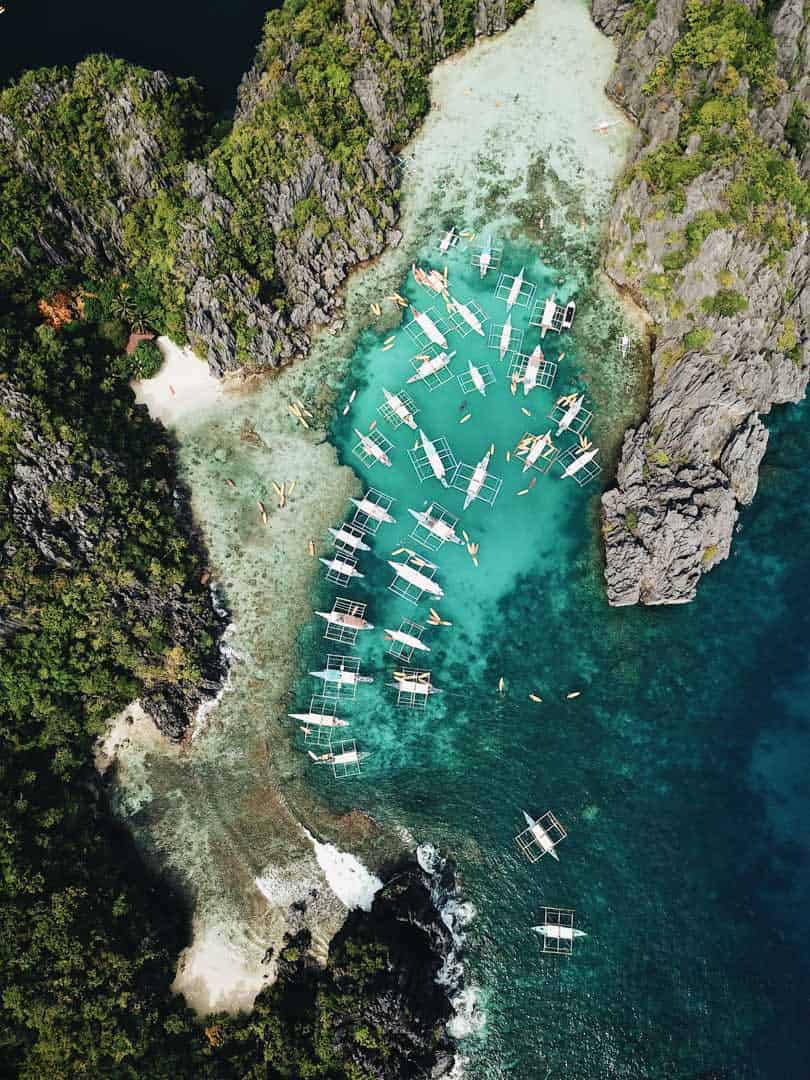
REACH OUT
As always, we create our content with you, fellow adventurers, in mind. So, how’d we do? Did you find this informative? Did it help you make a decision? Did we miss anything? We’d love to hear from you below. Thanks for reading and we hope your next adventure is a great one!


